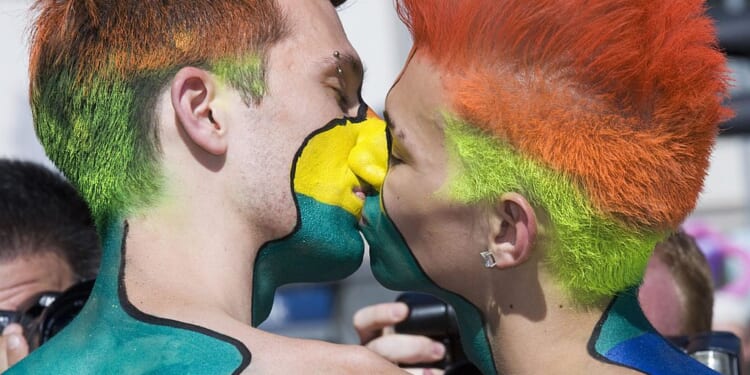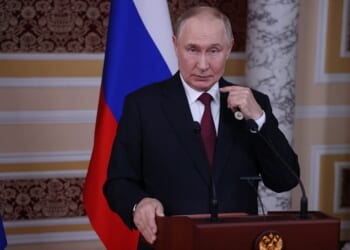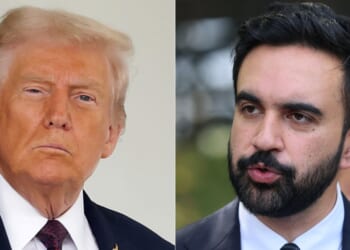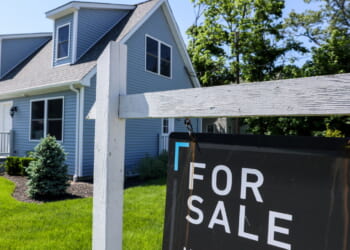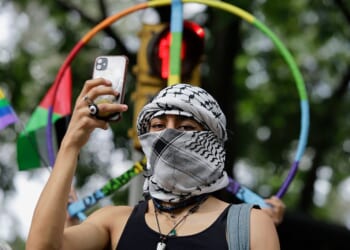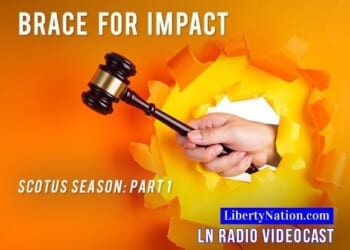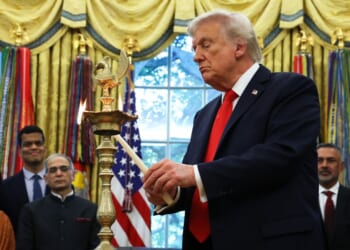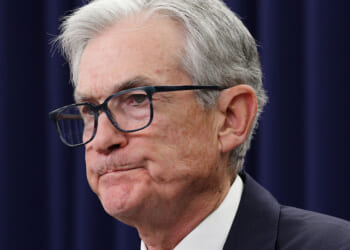There’s plenty to complain about when it comes to modern queer culture, whether it’s the shrieking moralistic activism, the horrendous hyperpop blaring in clubs or the sheer indignity of middle-aged men “posting hole” on dating apps. (If you don’t know, you don’t want to know).
So it’s not surprising then that we are seeing a splintering of gay men away from big tent “queer” identity. One faction is the “LGB without the T” crowd who wish to segregate sexual deviance from gender bending. Another is formed of the homo-nationalist movements, who seek to align gay liberation with a white Western ideal.
Despite appearances of a united front, rabid infighting has generally been the norm within the so-called LGBT community — or the LGBTQQIAAP2S+ community (yes, really), as some now insist on calling it. Lesbians, and particularly lesbian-feminists, have wavered back and forth in their tolerance for gay male sexual excesses. In her book, Anticlimax (1990), the radical feminist Sheila Jefferys famously documented what she saw as an “eroticising of power difference” inherent to gay male subcultures — particularly our penchant for sadomasochism and the rise of macho “clone culture”.
Among gay men too, the Nineties and early 2000s saw significant divides. “Anti-assimilationist” queers such as Michael Warner questioned the gay movement’s focus on inclusion within traditional institutions like marriage and the military in his book The Trouble with Normal (1999). The homosexual conservative Andrew Sullivan meanwhile argued in his own book, Virtually Normal (1995), that gays should become model citizens in order to be embraced by mainstream society.
More recently, a new group of gay male academics, writers and artists have entered the fray providing “post-liberal” or “dissident” perspectives on gay life. Their essays are collected in a new book Inversion: Gay Life After The Homosexual (Verdurin) edited by Pierre d’Alancaisez and Amir Naaman.
The editors frame the collection around what they call a “crisis” in homosexuality — the crisis being that gay men have become “normies”, “albeit a peculiar kind of normies that get a whole month of Pride dedicated to them.” Their fear is that as the LGBTQ+ umbrella expands and various formerly fringe gay identities become ever more mainstream, “it becomes difficult to articulate what position gay men, former social pioneers and cultural taboo breakers, play in society. Even the historical characterization of the homosexual as exceptional is thrown into doubt with the advent of this crisis.”
One clear theme unites the gay dissidents who contribute essays to Inversion — a wish to reinvigorate a sense of profanity and vice within homosexuality. Unlike previous anti-assimilationist queer movements, the contributors do not wish to abolish “institutions of normalcy” nor to frame mainstream heterosexual culture as the enemy. Indeed, in their view, homosexuality ought to be pushed to the margins in order for it to thrive.
Anthropologist Roger Lancaster, in his contribution, bemoans the “professional managerial class” for sanitising homosexuality into a consumerist lifestyle, and seeks — through Marxist analysis — to posit a more authentic “working class” faggotry bubbling under the surface. In a similar vein, the writer Travis Jeppenson laments the loss of the early queer punk scene, where homosexuality and nihilistic rebellion were intimately intertwined in the music of Pansy Division and Tribe 8 or the films of Bruce LaBruce and Gregg Araki. He calls on modern gay men to “nurture our inner faggotry” and to externalise “the sordidness that resides within”.
For these post-liberals, there is an inherent “scandal” to homosexuality — one that cannot and should not be normalised or sanitised by corporate Pride parades or cutesy Netflix shows about gay teen romance. In their reading, the authentic gay man is not happily partnered in the suburbs but on his knees in a public toilet.
“In their reading, the authentic gay man is not happily partnered in the suburbs but on his knees in a public toilet.”
He is also perpetually alone. According to co-editor d’Alancaisez, there is an irresolvable individualism to gay male identity precluding all strong community bonds. He argues that gay men are best understood as lone wolves “freely dissociating from a community that he is no longer able to imagine, deserving neither pity nor rescue”. Only when these men are threatened does a “gay community” form — whether during the AIDS crisis or the shared grief that followed the Admiral Duncan nail bombings of 1999. Without a clear enemy, any hope of gay communion is impossible.
Underlying many of the contributions in Inversion is sexual grievance. Most of the writers are older millennials — and they complain surprisingly frequently about being overlooked on Grindr due to their perceived politics or ideology. Co-editor Naaman constructs an elaborate theory of sexual psychopathology in order to air out his dating troubles. As an Israeli gay man living in Europe, he is sick of being “expected to voice his stance on the war in Gaza before he can be allowed to participate in chills, druggy, after-parties, or random hookups”. Pro-Palestinian homosexuals, he argues, are driven by an erotic attraction to primitive rebellion. He notes — in overloaded syntax — that these men are “…locked in a masturbatory, fetishizing gaze at the theatres of violence on their phones: in the onanistic eroticizing of morality, yearning to become one with the actors in the tragedy playing out on the screen.”
A deep fear of “biopolitics” also plagues many of the gay dissidents in the collection. The term, popularised by Michel Foucault, describes how modern institutions regulate through the setting of norms of health and productivity. Here, it is deployed to critique HIV-prevention efforts like PrEP and an undue focus on LGBT mental health. Writer and “independent researcher” David Moulton appears to be in a state of post-Covid paranoia. He fears that society has ruined the uniquely “gay art of suffering” reflected in the literary works of unrepentant sodomites like Jean Genet, who occupied a world of pimps, prostitutes and erotic longing.
In the most extreme case, Marcas Lancaster speaks in a derivative Burroughsian register about his early life of sexual abuse and neglect whilst romanticising the tragic excesses of AIDS-era perversion. Lancaster describes himself as a “failed gay” for not becoming one of the “Sadian heroes, who wore their lesions like badges of honor” and for “making the ultimate sacrifice for what they believed was a higher cause”. For the post-liberals, the AIDS crisis haunts all attempts to normalise homosexuality, revealing as it does the underlying degeneracy of gay sex. The lesson that they draw from this is that we must all make peace with our place at the fringes of society.
Of all the attempts to chart a course for gay men away from mainstream queer culture, theirs is the most depressing. It is, thankfully, also not very convincing.
It’s telling that there is no mention of romantic love anywhere in Inversion’s near 500 pages. Indeed any hint at emotional warmth is quickly shunned for an empty “transgression” — lacking any transcendent ideal. I suspect many of the gay male critics in the collection could very well resolve their inner turmoil through a simple combination of the — troublingly “biopolitical” — interventions of sunlight, cardio and tender affection.
There is, however, a slim glimmer of hope buried in one contribution. Philosopher Ran Heilbrunn outlines the failures of queer theory to account for gay male desire. One such desire is the preference amongst gay men for distinctly masculine physical beauty — contrary to the anti-hierarchical gender bending of the queer theorists. The obsession with male beauty is the thread that runs through a variety of homoerotic traditions, from Theognis of Megara to Robert Mapplethorpe. It strikes me that such high aestheticism — vitalist and passionate — could very well form the basis of a post-queer culture, but such a model is fundamentally anathema to the vacant despair preferred by our post-liberal essayists.
This more aspirational vision of gay male community is not without precedent. As historian Blake Smith notes in this collection, prior to the modern “gay homosexual” there existed a variety of homoerotic subcultures: from the formalised pederasty of Ancient Greece to the effeminate “invert” men (“fairies” or “mollies”) of the early 20th century who sought out rent boys and heterosexual “trade”. As I’ve written before, the mostly forgotten artists, scientists and thinkers who clustered around Adolf Brand’s magazine Der Eigene in late-19th-century Germany, saw their desires as an extension of refined taste and romantic male friendship. The past was complex and it demonstrates that homosexuality can come in many forms, both the lowly and degrading and cultivated and meaningful.
So desperate are the post-liberal dissidents to reject the “normie” homosexual that they have become trapped in an ironic appreciation for the worst features of past homosexual subcultures. I can only hope that their cynicism does not catch on and that gay men who find themselves out of place within contemporary queer culture aspire to something far more beautiful, communal and sustaining.

